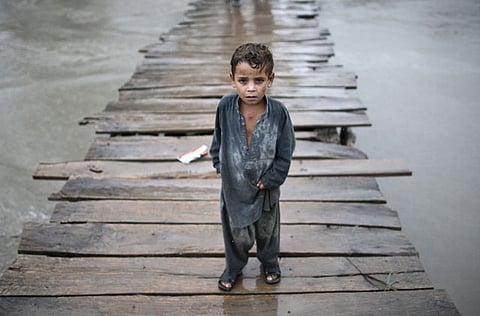Pakistanis face an extended and extreme winter
Biting cold is making life difficult for millions caught totally unprepared

Every winter Pakistan’s northern strip reports cold, icy temperatures that sends shivers across the plains adjoining the high lands. To experience chill in Pakistan towards the year-end is a regular experience. This time around there is something extraordinary in both the duration of the winters and their piercing coldness.
Weather experts are calling it a freak phenomenon that the nation has not experienced in a decade — with severe and mostly grim implications for public health and the economy.
But first a sense of the cold wave. Islamabad, the capital has had quite a few days already when the temperatures dropped below zero; generally, the average should have been around 7 or 8. The hilltops less than two hours driving distance from the city have had two weeks of -8 when its annual average has always been around 0 or 2 degrees below in comparable months from the previous years.
On the more moderate eastern rim of the country, in the coastal city of Karachi for instance, the citizens’ weather tolerance is being tested as never before. Even though bearable by the standards of the highlands, the temperatures there have plummeted 6 to 7 degrees less than what the people have experienced over decades. And all this is happening when the climate remains bone-dry.
It has been ten days since the last rainfall and another spell is not on the horizon for another twenty days. This means that the cold wave that is enveloping the country will remain in place for an unusually long period.
Experts at the Pakistan Meteorological Office define it as EEW, Extended and Extreme Winter.
And this is not wisdom of the hindsight. This was forecast almost a month ago but it fell on deaf ears; no one took it seriously. At any rate weather forecasts are never the main news in Pakistan. This is truly surprising considering how central the weather is to national life. As an agriculture-based economy if there is one thing the public should be schooled to appreciate or for officials to stay tuned into, it is the direction of the weather winds.
Changing patterns of rain
Moreover, some of the most testing times the nation has faced have been on account of the weather. Floods and drought have gone hand in hand — as have the changing patterns of rain — that affect crop sowing schedules and cause shortages of produce that the people once took forgranted.
This season can potentially bring some of these challenges to the fore. The cold wave has already started to add to the burden of the health system dealing with Covid19 infections. Dry spells make ordinary coughs become extraordinary and pulmonary illnesses spread like jungle fire.
Children and the elderly have severe health issues and the poorer sections of the society end-up with medical bills that can only be paid by spending less on food. Even the healthier and slightly better off have to dip into their scarce savings to buy new layers to protect themselves against biting cold. Most of the individual transportation is done on motorcycles which is the home carrier for women and children.
The wind chill factor adds to the public’s miseries that compound since gas disappears for the consumers. Domestic systems face massive disruptions since the fuel costs are so high that even if the gas supplies are ensured in the more privileged parts of the country, the cost of using the commodity shoots through the ceiling. The government faces the eternal dilemma of keeping the factories running or making the public less angry over gas shortages. And it is not an easy one to solve.
Missing infrastructural capacity
At present the country’s gas deficiency has led to a heated debate about whether the government delayed preparing for receiving the Liquefied Natural Gas on account of missing infrastructural capacity. The country, however, has a larger issue that goes beyond contested projects.
Its energy mix is heavily dependent on gas, which though is produced locally is not enough to meet its needs, and oil, again imported. When both become either expensive or their supplies are disrupted, the reliance increases on coal which has environmental consequences.
There have been efforts to somehow boost the local gas supply by jacking up domestic production and getting cross-regional pipelines operationalised. There has been little headway on both the counts. As a result this season has not been different from the previous season in terms of shortages and the attendant problems. The severity of the cold wave however has added a new sordid dimension to a perennial problem.
The less talked about consequences of the cold wave relate to its effects on the winter crops. As white sheets of frost cover the fields in the country’s agriculture areas, farmers work extra sweat to save their standing crops from being destroyed. Just as anxiously they wait for the weather to turn for the new seeds to be planted.
They have no advice and little news available about the end of their ordeal as official quarters are too caught up in other matters. This winter was depressing enough because of Covid-19 convulsions. Its extension and ferocity is making life even greyer for those who have been caught totally unprepared.
— Syed Talat Hussain is a prominent Pakistani journalist and writer. Twitter: @TalatHussain1
Sign up for the Daily Briefing
Get the latest news and updates straight to your inbox







